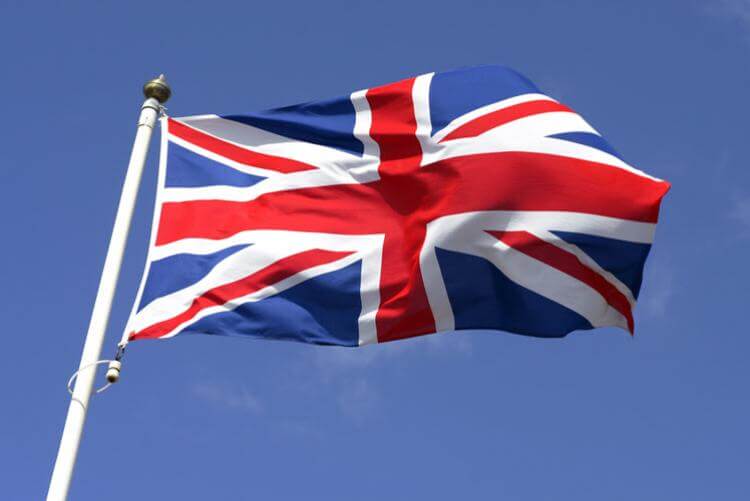Flags and flagpoles – what are the rules?
Whether you are feeling patriotic, or wish to promote your company; flying a flag might be one option. But what are the rules? Can you erect a flagpole without planning permission? Read on to establish what you can and can’t do with a flag or two on your property. The legislation can be quite complicated, but we have done our best to explain it.

A flag is an advertisement!
Displaying or flying a flag comes under the Town and Country Planning (Control of Advertisements) (England) Regulations 2007 – the same legislation covers items such as an advert on a moving vehicle, hoarding at a construction site, billboards at election time and similar. So far more than just flags!
However this article will concentrate on flags…..
Rules for flying all flags
The rules on flying flags in the United Kingdom are subject to some standard conditions. As such, all flags flown must:
- Be properly maintained and kept in a safe condition.
- They should not impair the overall visual appearance of the site.
- Have permission from the owner of any site on which they are displayed. That includes the Highway Authority if it is flown on highway land.
- Not obscure or hinder the interpretation of official road, rail, waterway, or aircraft signs. Flags must not create any hazardous situation in relation to the use of these types of transport.
- Flags should be removed when required to do so by local planning authority.
Once you have complied with the above rules, any flags flown will fall under three categories:
- Flags which can be flown without consent of the local planning authority
- Flags which do not need consent provided they comply with further restrictions (deemed consent)
- Flags which require consent or in other words require planning permission – by default any flag or flagpole which doesn’t comply with either of the first two categories will need planning permission.
Flags not requiring consent
- Any country’s national flag, civil ensign or civil air ensign. This includes any of the Channel Islands, the Isle of Man and any British Overseas Territory as well as the flag of St. George and St. Andrew
- The flag of the Commonwealth, the United Nations or any other international organisation of which the United Kingdom is a member
- A flag of any island, county, district, borough, burgh, parish, city, town or village within the United Kingdom
- The flag of the Black Country, East Anglia, Wessex, any Part of Lincolnshire, any Riding of Yorkshire or any historic county within the United Kingdom
- The flag of Saint David
- The flag of Saint Patrick
- The flag of any administrative area within any country outside the United Kingdom. This includes any of the Channel Islands, the Isle of Man and any British Overseas Territory
- Any flag of His Majesty’s forces
- The Armed Forces Day flag
You cannot display any form of advertisement on any of the flags above. Although you can display a black ribbon if the flat cannot be flown at half mast.
You can fly two flags from the same flagpole if they are listed above, or one flag from the list above and one from the section below. If the Union jack or Union Flag is flown this must be in the superior position. Oh and please ensure it is not flown upside down!
In case you are wondering regretfully the European Union flag is no longer listed above.
Flags that do not need permission as long as they meet certain rules
Many flags can also be flown without requiring planning permission from the local authority. You do however need to ensure that you comply with the rules. These flags can be flown in the curtilage of a building or from a building.
- House flag – flag is allowed to display the name, emblem, device or trademark of the company (or person) occupying the building, or can refer to a specific event of limited duration that is taking place in the building from which the flag is flown
- Any sports club (but cannot include sponsorship logos)
- The Rainbow flag (6 horizontal equal stripes of red, orange, yellow, green, blue and violet) – the Pride flag
- Specified award schemes – Eco-Schools, Queen’s Awards for Enterprise and Investors in People
- The NHS flag
- Blue Flag Award scheme to be flown from a flagpole on part of a beach or marina and a flag of the Green Flag Award scheme or Green Flag Community Award scheme to be flown on part of a park, garden or other green space, without the need for consent.
Flagpoles or flagstaffs
The legislation refers to the pole as a flagstaff, but for this page I will use the term flagpole as I feel that is the more common word.
In theory there is no limit to the number of flagpoles that a property can have, although there is a limit to the number of flags that can be flown without planning permission. This will be two flags (unless you double up on a flagpole)
There are three locations for flagpoles – mounted on the building, projecting from the side of the building and ground mounted within the curtilage. You can fly flags in a maximum of two locations. These two can be ground mounted locations. However you can’t have more than one protruding or roof mounted flags.
So the combinations would be: 2 x ground mounted; or 1 ground & 1 roof; or 1 roof and 1 projecting; or 1 projecting and 1 ground mounted.
Other restrictions
Ground mounted flagpoles must have a maximum height of 4.6m
Flags on projecting flagpoles can be a maximum size of 2 square metres. No maximum size from either a roof mounted or ground mounted pole.
If the site is within an AONB, Conservation area, The Broads or a National Park you will need planning for flags showing characters and symbols on any flag greater than 0.75m.
The regulations allow a flag of the Blue Flag Award scheme to be flown from a flagpole on part of a beach or marina and a flag of the Green Flag Award scheme or Green Flag Community Award scheme to be flown on part of a park, garden or other green space, without the need for consent.
Apart from these two exceptions, flags flown from locations without buildings will require planning permission.
Flags for construction sites
Different rules apply for flags to be displayed on construction sites. Without planning permission you may display one flag for up to 10 new dwellings, two flags for between 10 and 100 new dwellings and three flags where the number of dwellings exceeds 100. The flagpoles can be up to 4.6 metres high and any flag is restricted to 2 square metres. The flags must be removed within 1 year of the site being substantially complete.
Windsocks
I am not aware of any planning restrictions for windsocks on their own, either from ground or roof mounted locations. However if in doubt check with your local authority. And then let us know!
Page Updated: 7th July 2023
Other Common Projects
Many more projects to come....



